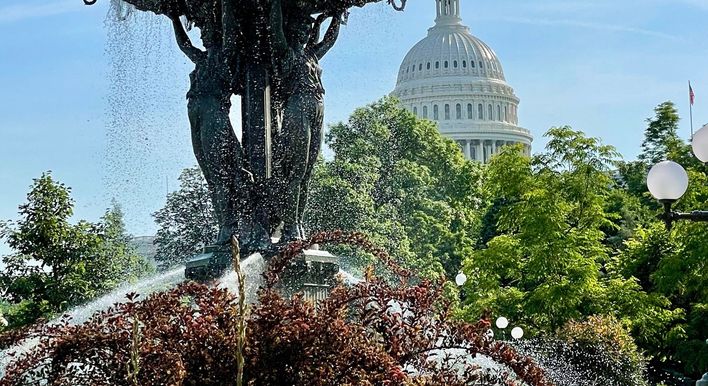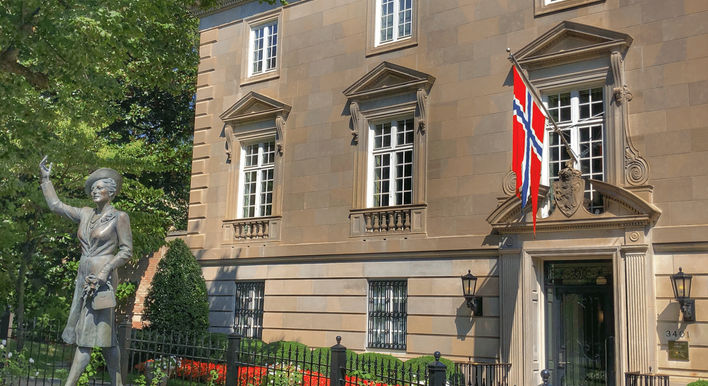At the end of this crumbling sidewalk near some docked sightseeing boats in SW Washington stands the Titanic Memorial. It’s dedicated “To the brave men who perished in the Titanic, April 15, 1912. They gave their lives that women and children might be saved.”
A tour we think you'll love
Days after the sinking a group of influential women, Carnegies, Rockefellers, Harrimans, Hearsts, and the like organized to create this memorial to honor those men who gave up their chances on the lifeboats, for the women and children. Back then the number of lifeboats on a ship was based on tonnage, not the number of passengers it carried.
The architect was Henry Bacon, best known for the Lincoln Memorial.
And the sculptor Gertrude Vanderbilt Whitney won the design competition. Gertrude hit a double by being born into the tremendously wealth Vanderbilt family then marrying into the fabulously wealthy Whitney family. Vanderbilt initially worked under an assumed name, she feared being thought of only as socialite and that no one would take her work seriously. Neither her family nor her husband were supportive of her life as an artist. She went on to found the Whitney Museum of American Art in New York.
Whitney’s outstretched-arms design predates the movie’s famous “I’m flying, Jack!” scene by many decades.
Thanks to that movie the Titanic still looms large in our imagination these many years after that tragic night. It used to have a more prominent location, where the Kennedy Center stands today, but was moved here in 1968.
Since 1979 the Men’s Titanic Society gather here in black tie to toast those men who, as Congressman Robert Luce of Massachusetts said at the memorial’s dedication:
“With no hesitation, no demur, men to whom life was as precious as to you or to me accepted the likelihood of a speedy death. All the vain distinction of class and creed and race were forgotten. Magnate and deckhand, millionaire and stoker, railway executive and steward, capitalist and cabin boy alike conquered the primitive instinct to fight for life and joined in sacrifice. Insofar as the sacrifice of the men we here commemorate shall have lessened the perils of the sea, they will not have died in vain. Nobler will be their reward if they have helped to teach us how to live and how to die.”
But let’s face it, you pretty much want to save the women first because they’re more important to the survival of the species then the men.
President and Mrs. Hoover were at the dedication in 1931. The statue was unveiled by former first lady Helen Taft. President Taft lost a close aide in the disaster, and that’s a story for another installment.






